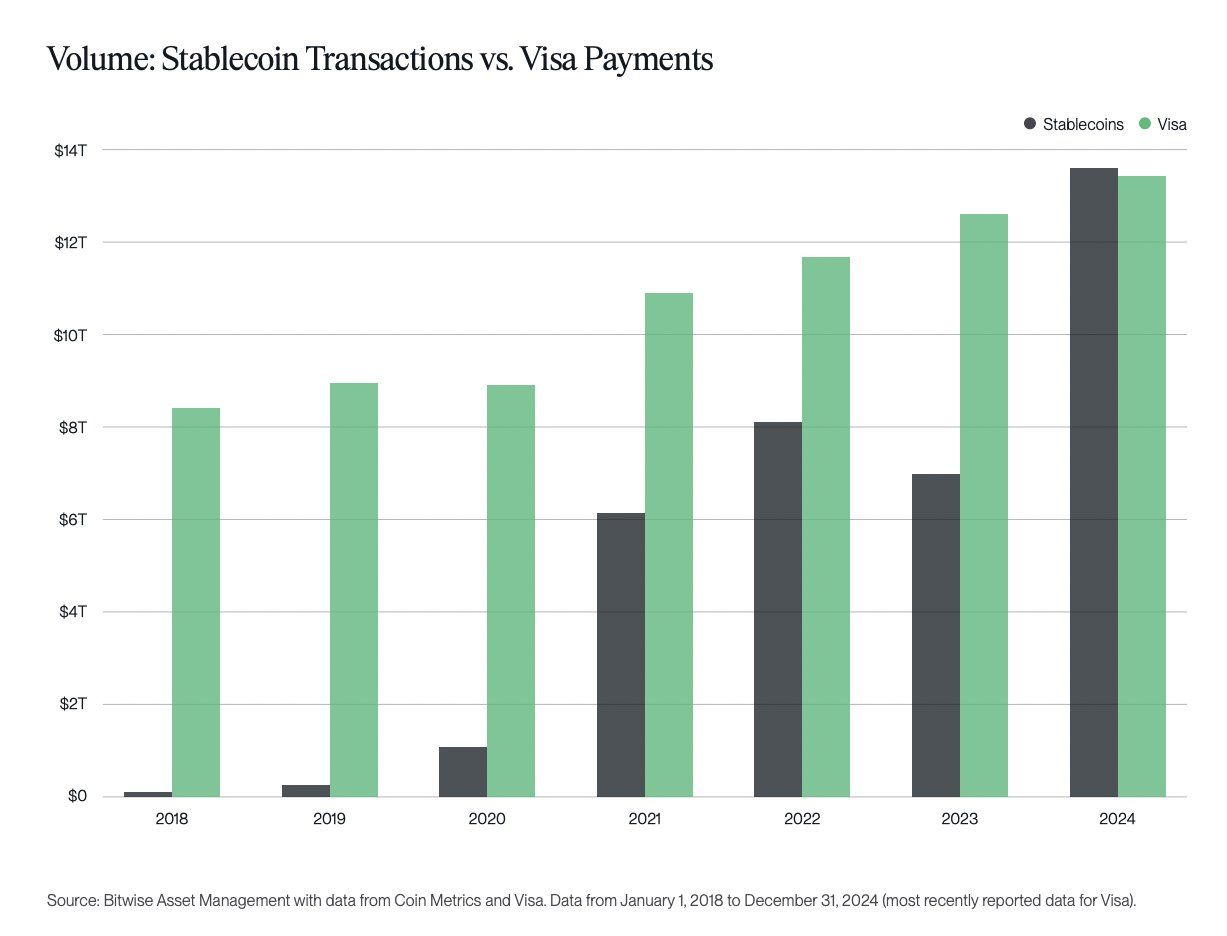| COINOTAG recommends • Exchange signup |
| 💹 Trade with pro tools |
| Fast execution, robust charts, clean risk controls. |
| 👉 Open account → |
| COINOTAG recommends • Exchange signup |
| 🚀 Smooth orders, clear control |
| Advanced order types and market depth in one view. |
| 👉 Create account → |
| COINOTAG recommends • Exchange signup |
| 📈 Clarity in volatile markets |
| Plan entries & exits, manage positions with discipline. |
| 👉 Sign up → |
| COINOTAG recommends • Exchange signup |
| ⚡ Speed, depth, reliability |
| Execute confidently when timing matters. |
| 👉 Open account → |
| COINOTAG recommends • Exchange signup |
| 🧭 A focused workflow for traders |
| Alerts, watchlists, and a repeatable process. |
| 👉 Get started → |
| COINOTAG recommends • Exchange signup |
| ✅ Data‑driven decisions |
| Focus on process—not noise. |
| 👉 Sign up → |
-
As Ethereum faces scrutiny over its centralized structure and recent price decline, prominent figures in the crypto space voice their opinions on its sustainability.
-
Meanwhile, Ethereum’s transition to a Proof of Stake (PoS) model continues to divide opinions among analysts, with some arguing that it undermines its original vision.
-
In an impactful comment, PlanB criticized Ethereum’s tokenomics, stating, “Premine is really a big red flag but I guess some people just don’t care.”
Explore the divided opinions on Ethereum’s centralization and its impact on the crypto market, following recent criticisms from notable analysts.
Why Does PlanB Call Ethereum “Centralized” and “Pre-Mined”?
PlanB referenced an old post by Vitalik Buterin from 2022, in which Buterin criticized the Stock-to-Flow model for creating a “false sense of certainty” regarding Bitcoin’s price. PlanB seized this opportunity to mock Ethereum, noting that the ETH/BTC trading pair had reached a nine-year low. He referred to Ethereum as a “shitcoin,” citing its centralized structure, pre-mined supply, use of Proof of Stake (PoS) over Proof of Work (PoW), and its flexible supply schedule.
“I know it’s impolite to gloat and all that, but I think shitcoins like ETH, that are centralized & premined, have PoS instead of PoW, switch supply schedule at will, are harmful and deserve all the mockery they get,” PlanB said.
PlanB is not the only one who holds these views. Ethereum’s transition to PoS through “The Merge” reduced its energy consumption by over 99%. However, some experts believe this shift undermined the network’s long-term value.
| COINOTAG recommends • Professional traders group |
| 💎 Join a professional trading community |
| Work with senior traders, research‑backed setups, and risk‑first frameworks. |
| 👉 Join the group → |
| COINOTAG recommends • Professional traders group |
| 📊 Transparent performance, real process |
| Spot strategies with documented months of triple‑digit runs during strong trends; futures plans use defined R:R and sizing. |
| 👉 Get access → |
| COINOTAG recommends • Professional traders group |
| 🧭 Research → Plan → Execute |
| Daily levels, watchlists, and post‑trade reviews to build consistency. |
| 👉 Join now → |
| COINOTAG recommends • Professional traders group |
| 🛡️ Risk comes first |
| Sizing methods, invalidation rules, and R‑multiples baked into every plan. |
| 👉 Start today → |
| COINOTAG recommends • Professional traders group |
| 🧠 Learn the “why” behind each trade |
| Live breakdowns, playbooks, and framework‑first education. |
| 👉 Join the group → |
| COINOTAG recommends • Professional traders group |
| 🚀 Insider • APEX • INNER CIRCLE |
| Choose the depth you need—tools, coaching, and member rooms. |
| 👉 Explore tiers → |
Meltem Demirors, an executive at Crucible Capital, called the move a trillion-dollar mistake. She believes it diluted Ethereum’s core network and hindered innovation in GPU hardware.
In addition to criticizing PoS, PlanB also brought up Ethereum’s pre-mine controversy.
| COINOTAG recommends • Exchange signup |
| 📈 Clear interface, precise orders |
| Sharp entries & exits with actionable alerts. |
| 👉 Create free account → |
| COINOTAG recommends • Exchange signup |
| 🧠 Smarter tools. Better decisions. |
| Depth analytics and risk features in one view. |
| 👉 Sign up → |
| COINOTAG recommends • Exchange signup |
| 🎯 Take control of entries & exits |
| Set alerts, define stops, execute consistently. |
| 👉 Open account → |
| COINOTAG recommends • Exchange signup |
| 🛠️ From idea to execution |
| Turn setups into plans with practical order types. |
| 👉 Join now → |
| COINOTAG recommends • Exchange signup |
| 📋 Trade your plan |
| Watchlists and routing that support focus. |
| 👉 Get started → |
| COINOTAG recommends • Exchange signup |
| 📊 Precision without the noise |
| Data‑first workflows for active traders. |
| 👉 Sign up → |
ETH’s tokenomics reveal that developers pre-mined over 72 million ETH in the early stages—about 60% of the circulating supply. This could give a small group excessive control, especially under PoS, where large holders have more influence over transaction validation.
“Premine is really a big red flag but I guess some people just don’t care,” PlanB added.
| COINOTAG recommends • Traders club |
| ⚡ Futures with discipline |
| Defined R:R, pre‑set invalidation, execution checklists. |
| 👉 Join the club → |
| COINOTAG recommends • Traders club |
| 🎯 Spot strategies that compound |
| Momentum & accumulation frameworks managed with clear risk. |
| 👉 Get access → |
| COINOTAG recommends • Traders club |
| 🏛️ APEX tier for serious traders |
| Deep dives, analyst Q&A, and accountability sprints. |
| 👉 Explore APEX → |
| COINOTAG recommends • Traders club |
| 📈 Real‑time market structure |
| Key levels, liquidity zones, and actionable context. |
| 👉 Join now → |
| COINOTAG recommends • Traders club |
| 🔔 Smart alerts, not noise |
| Context‑rich notifications tied to plans and risk—never hype. |
| 👉 Get access → |
| COINOTAG recommends • Traders club |
| 🤝 Peer review & coaching |
| Hands‑on feedback that sharpens execution and risk control. |
| 👉 Join the club → |
These criticisms gained traction as Ethereum dominance hit a five-year low and ETH has dropped nearly 60% since late last year.
Despite Criticism, Ethereum Plays a Growing Role in Real-World Applications
In response, analyst Danny Marques highlighted ETH’s growing relevance. He noted that the Ethereum network processed a massive amount of stablecoin transactions in 2024, more than Visa. A Bitwise report shows stablecoins processed nearly $14 trillion, exceeding Visa’s $13 trillion, while ETH-based stablecoin supply accounts for over 50% of the total stablecoin supply.

Stablecoin Transactions vs. Visa Payment. Source: Bitwise.
| COINOTAG recommends • Exchange signup |
| 📈 Clear control for futures |
| Sizing, stops, and scenario planning tools. |
| 👉 Open futures account → |
| COINOTAG recommends • Exchange signup |
| 🧩 Structure your futures trades |
| Define entries & exits with advanced orders. |
| 👉 Sign up → |
| COINOTAG recommends • Exchange signup |
| 🛡️ Control volatility |
| Automate alerts and manage positions with discipline. |
| 👉 Get started → |
| COINOTAG recommends • Exchange signup |
| ⚙️ Execution you can rely on |
| Fast routing and meaningful depth insights. |
| 👉 Create account → |
| COINOTAG recommends • Exchange signup |
| 📒 Plan. Execute. Review. |
| Frameworks for consistent decision‑making. |
| 👉 Join now → |
| COINOTAG recommends • Exchange signup |
| 🧩 Choose clarity over complexity |
| Actionable, pro‑grade tools—no fluff. |
| 👉 Open account → |
Investor Wise also pointed out that Ethereum hosts 56% of all real-world asset (RWA) value, including stablecoins.
Additionally, investor AllThingsEVM.eth argued that Ethereum is becoming less centralized each year, while Bitcoin is becoming more centralized. He cited the growing trend of nation-states and institutions stockpiling BTC.
| COINOTAG recommends • Members‑only research |
| 📌 Curated setups, clearly explained |
| Entry, invalidation, targets, and R:R defined before execution. |
| 👉 Get access → |
| COINOTAG recommends • Members‑only research |
| 🧠 Data‑led decision making |
| Technical + flow + context synthesized into actionable plans. |
| 👉 Join now → |
| COINOTAG recommends • Members‑only research |
| 🧱 Consistency over hype |
| Repeatable rules, realistic expectations, and a calmer mindset. |
| 👉 Get access → |
| COINOTAG recommends • Members‑only research |
| 🕒 Patience is an edge |
| Wait for confirmation and manage risk with checklists. |
| 👉 Join now → |
| COINOTAG recommends • Members‑only research |
| 💼 Professional mentorship |
| Guidance from seasoned traders and structured feedback loops. |
| 👉 Get access → |
| COINOTAG recommends • Members‑only research |
| 🧮 Track • Review • Improve |
| Documented PnL tracking and post‑mortems to accelerate learning. |
| 👉 Join now → |
“Tell me what happens when nation states are the largest holders of BTC while mining rewards get more and more sparse. Will the network be more decentralized when the US or China is running the majority of miners to ‘secure’ their stake? Or will BlackRock create its own hard fork when it feels its need to upgrade issuance?” he said.
Despite ongoing criticism, Ethereum keeps improving its performance and scalability. Recently, co-founder Vitalik Buterin proposed replacing the Ethereum Virtual Machine (EVM) with RISC-V. This upgrade aims to boost smart contract performance and scalability while maintaining backward compatibility with existing contracts.
| COINOTAG recommends • Exchange signup |
| 🎯 Focus on process over noise |
| Plan trades, size positions, execute consistently. |
| 👉 Sign up → |
| COINOTAG recommends • Exchange signup |
| 🛠️ Simplify execution |
| Keep decisions clear with practical controls. |
| 👉 Get started → |
| COINOTAG recommends • Exchange signup |
| 📊 Make data your edge |
| Use depth and alerts to avoid guesswork. |
| 👉 Open account → |
| COINOTAG recommends • Exchange signup |
| 🧭 Be prepared, not reactive |
| Turn setups into rules before you trade. |
| 👉 Create account → |
| COINOTAG recommends • Exchange signup |
| ✍️ Plan first, then act |
| Entries, exits, and reviews that fit your routine. |
| 👉 Join now → |
| COINOTAG recommends • Exchange signup |
| 🧩 Consistency beats intensity |
| Small, repeatable steps win the long run. |
| 👉 Sign up → |
Conclusion
The discussions surrounding Ethereum’s structure and functionality highlight the ongoing tension between decentralization and practicality in the crypto ecosystem. As the network continues to expand in real-world applications and stablecoin dominance, it remains pivotal for stakeholders to consider the implications of its tokenomics and governance structure moving forward.
| COINOTAG recommends • Members‑only research |
| 📌 Curated setups, clearly explained |
| Entry, invalidation, targets, and R:R defined before execution. |
| 👉 Get access → |
| COINOTAG recommends • Members‑only research |
| 🧠 Data‑led decision making |
| Technical + flow + context synthesized into actionable plans. |
| 👉 Join now → |
| COINOTAG recommends • Members‑only research |
| 🧱 Consistency over hype |
| Repeatable rules, realistic expectations, and a calmer mindset. |
| 👉 Get access → |
| COINOTAG recommends • Members‑only research |
| 🕒 Patience is an edge |
| Wait for confirmation and manage risk with checklists. |
| 👉 Join now → |
| COINOTAG recommends • Members‑only research |
| 💼 Professional mentorship |
| Guidance from seasoned traders and structured feedback loops. |
| 👉 Get access → |
| COINOTAG recommends • Members‑only research |
| 🧮 Track • Review • Improve |
| Documented PnL tracking and post‑mortems to accelerate learning. |
| 👉 Join now → |








